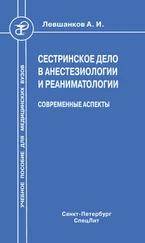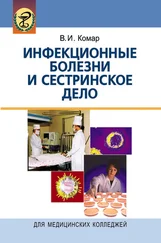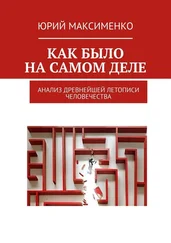Barnum, B.S. (1998). Nursing theory: analysis, applicaton, evaluation. Philadelphia, PA: Lippincott, c1998.
Barnum, B.S. (1990). Nursing Theory Analysis, Applicaton, Evaluation. 3. utg. Glenview, Illiois: Scott, Foresman/Little, Brown Higher Education.
Barnum, B.S. (1994). Nursing theory: analysis, applicaton, evaluation. 4. utg. Philadelphia: Lippincott. Beckstrand, J. (1978a). The notion of practice theory and the relationship of scientific and ethical knowledge to practice. Research in Nursing and Helth, 1(3): 131–136.
Beckstrand, J. (1978b). The Need for a practice theory as indicated by the knowledge used in conduct of practice. Research in Nursing and Helth , 1(4): 175–179.
Beckstrand, J. (1980). A critique of several conceptions of practice theory in nursing. Research in Nursing and Helth, 3(2): 69–80.
Benner, P. (red.) (1994). Interpretiv phenomenology: embodiment, caring, and ethics in health and illness. Thousand Oaks, Calif: Sage Publications.
Benner, P. (1984). From novice to expert. Menlo Park, CA: Addison-Wesley.
Benner, P. (1985). Quality of Life: A phenenomenological perspective on explanation, prediction, and understanding in nursing. Advances in Nursing Science, 8(1): 1-14.
Benner, P.; Tanner, C. (1987). How expert nurses use intuition. American Journal of Nursing, 87: 23–31.
Benner, P.; Wrubel, J. (1989). The Primacy of Caring Stress and Coping in Health and Illness. Menlo Park, CA: Addison-Wesley.
Bishop, A.H.; Scudder, J.R. (1990). The Practical, Moral, and Personal Sense of Nursing. Albany: State University of New York Press.
Bishop, A.H.; Scudder, J.R. (1991). Nursing: The Practice of Caring. New York: National League for Nursing.
Bishop, A.H.; Scudder, J.R. Jr. (1996). Nursing ethics: therapeutic caring presence. Boston, MA: Jones Bartlett Publ.
Bishop, A.H.; Scudder, J.R. Jr. (1997). Nursing as a practice rather than an art or a science. Nursing Outlook, 45(2): 82-5.
Bjórnsdóttir, K. (1996). The construction of a profession: a study of the history of nursing in Iceland. Nursing Inquiry, 3, 13–22.
Bourdieu, P. (1997). Af praktiske grunde: omkring teorien om menneskelig handlen. K0benhavn: Hans Reitzel.
Bowar-Ferres, S. (1977). LOEB Center og dets filosofi. Sykepleien, 64(1): 8-12.
Boykin, A; Schoenhofer, S. (1993). Nursing as caring: a model for transforming practice. New York: National League for Nursing, 1993.
Breimoen, M. (1983). Primaersykepleie i praksis. Sykepleien, 70(16): 6-10,15.
Brown, E.L. (1948). Nursing for the Future. New York: Russell Sage Foundation.
Brown, P. (1995). Naming and Framing: the social construction of diagnosis and illness. Journal of Health and Social Behavior. Spec. no: 34–52.
Bullough, V.L.; Bullough, B.; Stanton M.P. (1990). Florence Nightingale and her Era. A Collection of New Scholarship. New York: Garland Publ.
Carlsen, L.B. (1982). Primarsykepleie – en ny omsorgsmodell? Oslo: Ad Notam Gyldendal Norsk Forlag.
Carnevali.D.L. (1992). Sykepleieplanlegging Oslo: Ad Notam Gyldendal Norsk Forlag.
Carper, B.A (1978). Fundamental Patterns of Knowing. Advances in Nursing Science, 1(1): 13–23.
Carroll-Johnson, R.M. (1991). Classification of Nursing Diagnoses. Proceedings of the Ninth Conference. North American Nursing Diagnosis Association. Philadelphia: JB Lippincott, s. 45–61 (discussion).
Cash, K. (1997). Social epistemology gender and nursing theory. International Journal of Nursing Studies, 34(2): 137-43.
Chinn, PL.; Jacobs, M.K. (1983). Theory and nursing: A Systematic Approach. St. Louis: C.V. Mosby.
Chinn, PL.; Kramer, M.K. (1995). Theory and nursing: A Systematic Approach. 4. utg. St. Louis: C.V. Mosby.
Chopoorian, T.J. (1986). Reconceptualizing the Environment. I P. Moccia (red.): New Approaches to Theory Development. New York: National League for Nursing.
Christensen, D. (1984). Liv efter lammelse? Värd i Norden, 4(1): 177–188.
Clifford, J. (1981). Primaersykepleiens muligheter. Sykepleien, 68(3): 4–7, 30.
Cody, WK. (1996). Theoretical concerns. Occult reductionism in the discourse of theory development. Nursing Science Quarterly, 9(4): 140-2.
Cohen, M.Z. (1987). A historical overview of the phenomenologic movement, Image, 19(1): 31-4.
Daeffler, R.J. (1970). Om kritikk – og forskning. Sykepleien, 57(14/15): 492.
Dagsland, H. (1970). Fra amerikansk sykepleieforskning – utdrag fra Dorothea E. Orem: Foundations of Nursing and its Practice. Sykepleien, 57(8): 244-51. Denzin, N.K.; Lincoln, Y.S. (1994). Handbook of qualitative research. Thousand Oaks, Calif.: Sage Publications. Dickoff, J.; James, P. (1989). Theoretical Pluralism for Nursing Diagnosis. I:
Carroll-Johnson R.M., Paquette, M. Classification of Nursing Diagnoses. Proceedings of the Eighth Conference. North American Nursing Diagnosis Association. Philadelphia: JB Lippincott, s. 98-125.
Dickoff, J.; James, P.; Wiedenbach, E. (1968a). Theory in a practice discipline: Part 1. Practice oriented theory. Nursing Research, 17(5): 415–435.
Dickoff, J.; James, P.; Wiedenbach, E. (1968b). Theory in a practice discipline: Part 2. Practice oriented research. Nursing Research, 17(6): 545–554.
Diers, D. (1970). This I believe about nursing research. Nursing Outlook, 18(11): 50–54.
Diers, D. (1984). Commentary on three research articles using conseptual models of nursing as frameworks. Western Journal of Nursing Research, 6: 191-192
Donaldson, S.K.; Crowley, D.M. (1978). The discipline of Nursing. Nursing Outlook, 26(2): 113–120
Duffy, M.; Muhlenkamp, A.F. (1974). A framework for theory analysis. Nursing Outlook, 22(9): 570–574.
Ellis, R. (1968). Characteristics of significant theories. Nursing Research, 17(3): 217–222.
Ellis, R. (1969). The Practitioner as Theorist. American Journal of Nursing, 69: 1434–1438.
Elstad, I. (198 la). Ein kritikk av teorien om eigenomsorg. Sykepleien, 68(20): 16–19.
Elstad, I. (1981b). Når pasienten ikkje passer inn i skjemaet. Sykepleien , 68(21): 15–18,40.
Engström, B.; Norberg, A. (1987). Omvårdnadsdiagnostik som ett medel för bedömming av kvalitet i vården. Vård i Norden, 7(3–4): 428–429.
Eriksen, T.R. (1989). Kvindeverden – en offentlig sektor. Social Kritik, 3: 616.
Erikson, E.H. (1963). Childhood and Society. New York: Norton.
Erikson, E.H. (1968). Identity, Youth, and Crisis. New York: Norton.
Eriksson, K. (1990). Pro Caritate. Åbo: Åbo Akademi, Insritutionen för vårdvetenskap.
Eriksson, K. (1995). Det lidende menneske. Oslo: Tano. Eriksson, K. (1996).
Efterskrift – om vårdvetenskapens möjligheter ochgränser. I Martinsen, K. Fenomenologi og omsorg. Tre dialoger. Oslo: Tano.
Eriksson, K. (1979). Vårdprocessen. Stockholm: Almquist & Wiksell.
Eriksson, K. (1984). Halsans idé . Stockholm: Almquist & Wiksell
Eriksson, K. (1987a). Vеrdandets idé. Stockholm: Almquist & Wiksell.
Eriksson, K. (1987b). Pausen. En Beskrivning av vårdvetenskapens kunnskapsobjecekt. Stockholm: Almquist & Wiksell.
Eriksson, K., et al. (1986). Vårdteknologi. Stockholm: Almquist & Wiksell.
Fawcett, J. (1993). From a plethora of paradigms to parsimony in worldviews. Nursing Science Quarterly, 6(2): 56-8.
Читать дальше
Конец ознакомительного отрывка
Купить книгу






![Марьяна Иванова - В чём дело, Полли? [СИ]](/books/386556/maryana-ivanova-v-chem-delo-polli-si-thumb.webp)





